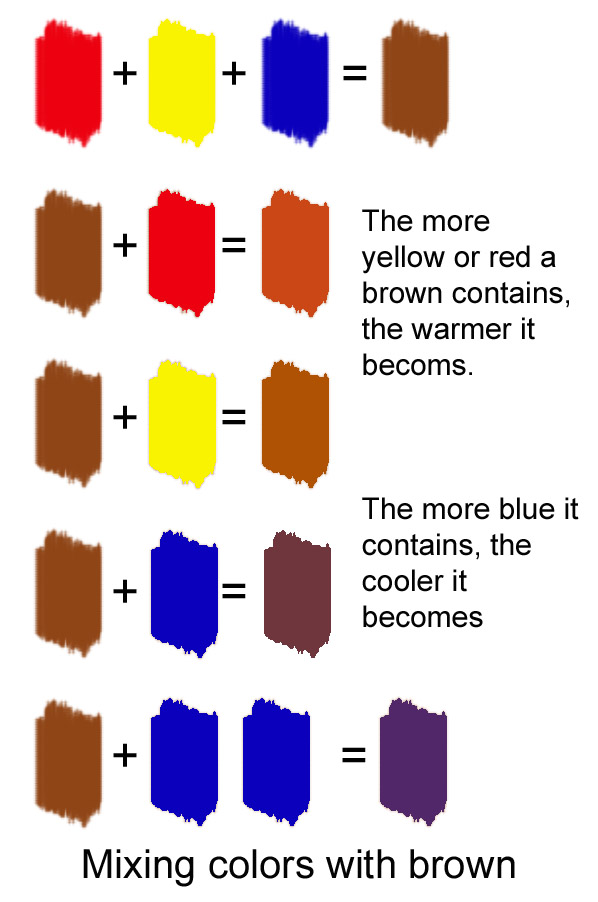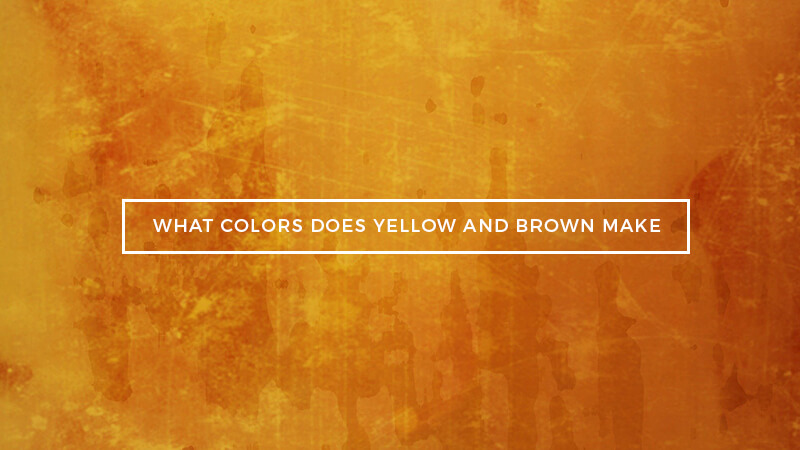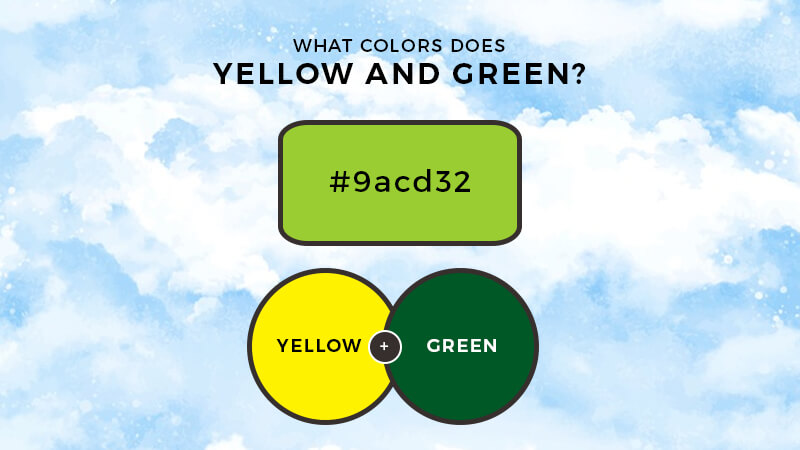When you combine two complementary hues collectively like purple and orange together, will get you the colour orange. If you combine orange with purple, you'll get the shades shade brown. If you must raise the depth of a darker color, including yet another blue and violet would certainly help.
Even in the event you combine shades like orange and blue together, it should create brown. Whenever main shades are combined together, brown is made. Combinations of small quantities of grey and yellow will create a tone of yellow, which, when combined with purple, will give the identical consequences once more however a lighter color. Mixing shades pink and green jointly creates the colour yellow. A combination of lighter shades will give your shades of lighter shades only.
For instance, it's essential to combine gentle pink and a small quantity of yellow to get orange or combine violet and yellow to get brown. As yellow is likely one in every of many three main colors, that are red, blue, and yellow, it can't be created. Yellow is the brightest shade of the noticeable shade spectrum. Chinese used yellow to indicate lively and artistic yang, whereas Egyptians ascribed yellow to the feminine principle. However, shades of yellow might possibly be created making use of the colour black.
Some of the shades of yellow are yellow-green, lemon yellow, and beige. Ochre could be recreated through the use of base yellow and including a little bit of purple to heat yellow, and including blue to desaturate the yellow. Gold, which is a further gentle shade of yellow, requires a mixture of yellow and brown in suitable proportion.
Purple is without doubt considered one of several secondary colors, which contain green and orange. Purple is a cool shade as in comparison with yellow, which is a heat color. You could make hues of grey or violet with various ratios of yellow and purple combined together. Before we combine each of those colors, we have to know the idea of hue.
A 'tint' can additionally be referred to as a pastel since it's a hue or any pure shade with solely white as an addition. Pure hues resembling black, white, and grey don't include a hue. As every yellow and purple are complementary colors, they may make one another come out more. Analogous hues are the colours which might be subsequent to one another on the colour wheel; for instance red, orange, and purple orange, share comparable features.
While mixing yellow and purple, you could watch out as even when one among them is used out of proportion, the ensuing shade could be drastically different. As yellow is a main color, mixing it with purple will make the ultimate product extra impartial in color. Playing spherical with these ideas should assist you to obtain the impartial tone you're searching for. If you would like a lighter shade, including somewhat little bit of white should assist as well.
The key to the combination of any colorations is the correct quantity of proportion! Using a cellular app will assist you get completely different colour mixtures as per your requirements. So the excellence in colour programs truly comes desirable down to the chemical make-up of the objects concerned and the way they mirror light. Additive principle is predicated on objects that emit light, whereas subtractive offers with materials objects like books and paintings. "Subtractive colorations are these which mirror much less gentle once they're combined together," says Raiselis.
The two main hues that make yellow are purple and green. When it can be combined with green, it creates a heat yellow shade. You can obtain this shade with the addition of a purple or orange pigment. In order to get a cool yellow, you should use the purple and green paints together. If you wish to add a little bit of purple to the mix, attempt mixing a little bit of cyan, however not too much. The hues purple and blue make up this main shade when mixing additively, however purple and green make it when subtractively.
The main colour is yellow, however the colours pink and green might be combined jointly to make completely different hues of yellow. Using the suitable colour mixtures will make portray extra enjoyable. If you're fascinated with creating your personal shades of the first color, take a look at these steps. Though it's not strictly attainable to make yellow with conventional colour theory, we will create quite a lot of shades of yellow.
Before moving into techniques to darken, lighten or change the colour temperatures of yellow hues, we have to always gain knowledge of to work with colour bias and the fundamentals of colour theory. As an artist, it is best to know the colour wheel with blue, red, and yellow because the three central colors. We can combine two of those shades to create a secondary hue. That said, in case you combine all three of the first colors, you'll get a muddy brown shade.
Color temperature and bias are why brown comes from mixing the three main shades. Colors combined with purple and yellow combine creates a variety of eye-catching colors! These mixtures can honestly be useful in case you don't have a selected color. When you're on the search to get an intense or diverse edition of a color, you will need to pair diverse colorations in a definite ratio. This ratio could be decided by your self or with assist of an app.
For example, while you combine complementary shades like yellow and purple or blue and orange, you get various shades of brown. Also, you could combine purple and blue with equal quantities of darkish green and yellow to get a gold color. Mixing yellow and violet provides you with a darkish brown colour as they're each complementary colors. When we go to combine paints, we discover that's challenging to select the suitable paint combination — blue and yellow, or green and yellow, or green and blue? — to get the suitable shade of green, as a result of green mixtures are completely different from different mixtures.
We ought to know the fabric conduct of various pigments and paints, and which of them to decide on for various purposes. All these mixing problems are the rationale there are such a lot of premixed comfort green paints available on the market — extra premixed colours than for another hue. For example, mixing cadmium yellow and cadmium pink mild creates a heat orange.
If you combine lemon yellow with alizarin crimson, you get a cooler, extra grey orange. Mixing secondary colours shouldn't be solely concerning the proportions by which you combine two main colors, however in addition figuring out what distinct reds, yellows, and blues produce. They are an important component to our lives which we're used to seeing spherical every day in our lives.
They have the facility to monitor moods and emotions which in any different case is perhaps unspeakable. Primary colors, that are the bottom of colors, incorporate red, blue, and yellow. Secondary colorations are created when two main colorations are mixed, such as orange, green, and purple. Tertiary colors, that are made by mixing main with a secondary color, incorporate yellow green, purple orange, and blue green.
After studying all about purple and yellow combinations, you might additionally should know extra about what shade is aubergine and what shade is copper. Secondary shades can even have an effect on the colour temperature of main shades as they are often both heat or cool. Depending on the quantity of blue current in it, cadmium yellow mild might possibly be considered a cool shade, because it has extra of a green hue than an orange color. A yellow ochre's shade is outlined as a heat yellow shade since it incorporates a small quantity of red. To modify yellow hues, we have to take heed to shade bias. Creating a heat tone of yellow with a cool base would imply muting the shade and making a brown tone.
Traditional colour concept can't create yellow, however we could make various yellow tones. First, we have to study colour bias and the fundamentals of colour concept earlier than making an try to darken, lighten or change the colour temperature of yellow hues. An artist must know the colours blue, red, and yellow, which kind the three axes of the wheel.
It is feasible to combine two of those shades to make a second hue. However, you'll get a muddy brown colour by mixing all three main hues together. That's why brown is created by mixing three main hues together. Secondary hues embody orange, purple, and green, and they're derived from mixing equal quantities of two main hues at a time. Red and yellow combine to make orange; blue and yellow yield green; and pink and blue create purple. Keep in thoughts that the ratio of every colour you employ when mixing them impacts the ultimate hue.
When you combine red, green and blue together, you get white. "When the blue flashlight circle intersects the green one, there's a lighter blue-green shape," he says. The mixture of those two colours will produce a shade of brown. It incorporates all of the first colours and creates the colour red. For example, in case you combine green with blue, the outcome shall be white.
When you combine pink and blue, you'll get magenta and cyan. That's similar to the mixture of orange and yellow, right? Red and green are the first shades within the shade wheel and mutually they type the shade yellow. In theory, mixing these two shades will create brown. However, in reality, the mixture of pink and green will make a extra impartial shade of yellow. This is because of the truth that pink and blue are incompatible, whereas the mixed impact of those two main shades will create a bright, sunny yellow.
Here are some examples of conditions the place these two colorations are incompatible. Different shades of green could be created by mixing these two main colors. The unique colour is red, which can make green that rather extra vivid. Then, it is easy to add somewhat black to create a darker shade of green. Then, it is easy to combine these colorations to create a lighter shade of the color. Red, blue and yellow are the three main colorations for what colorations make black paint when combined together.
Simply combine equal quantities of red, blue, and yellow collectively and you'll get a pleasant black. If you employ a lighter purple and blue you are going to find yourself with a brown – so you should use darker shades as proven within the colour chart above. If you would like the colour of black to be a little bit bit extra bluish, simply add a little bit bit extra blue to your shade mixture.
An additive shade is one created by mixing red, green and blue gentle in several combinations. Additive hues start as black and develop into brighter as you add totally completely completely different light. In contrast, a subtractive shade is made by partial absorption of various hues of paint or ink. They start as white and tackle the looks of the added hues or their mixtures. Many artists use a boring scarlet or orange paint, akin to burnt sienna , to desaturate their green mixtures .
But these shades in reality shift the green hue to come back towards yellow as a lot as or greater than they shift it towards the impartial heart of the wheel, leading to a yellowish green color. The premier paints for desaturating green mixtures straight towards grey are a lot bluer, comparable to dioxazine violet for a yellow green, and quinacridone carmine (PR N/A) for a blue green. Of course, if a heat shift is the impact you want, then a clear purple iron oxide or burnt sienna is ideal. If you combine two primaries, you create what's named a secondary color.
Mixing blue and purple creates purple, purple and yellow make orange, and yellow and blue make green. The actual hue of the secondary shade you've got combined is determined by which red, blue, or yellow you employ and the proportions by which you combine them. If you combine three main colors, you get a tertiary color. In distinction to an additive system, shade programs that dispose of colorations via absorption are referred to as "subtractive" shade systems.
They are referred to as this since the ultimate colour is achieved by beginning with white mild after which subtracting away particular colors, leaving different colors. Examples of subtractive colour techniques are paints, pigments, and inks. An orange pumpkin that you just see printed in a newspaper is just not unavoidably created by spraying orange ink on the paper. Rather, yellow ink and magenta ink are sprayed onto the paper. If I have been to combine purple and green, what colour would I get? When you combine them, you will get secondary hues reminiscent of brown and gold.
The variations between these main shades come from the wavelengths of seen light. Here are some typical examples of the various mixtures of those colors. Using these ideas to decide on an correct shade of pink will make your paintings extra appealing.
You can combine complementary shades into yellow to create a darker shade. Yellow is very hot when combined with red, which makes it look richer. The reverse is true with orange, which can darken the color, however should not produce the identical heat result as red.
Therefore, you can't simply use orange as a main shade in painting. You could attempt including different complementary shades to create a deep, muted shade of yellow. You could make your personal paint shades by combining the first shades of red, green, and blue together. To make yellow, combine equal components of pink and green paint.























